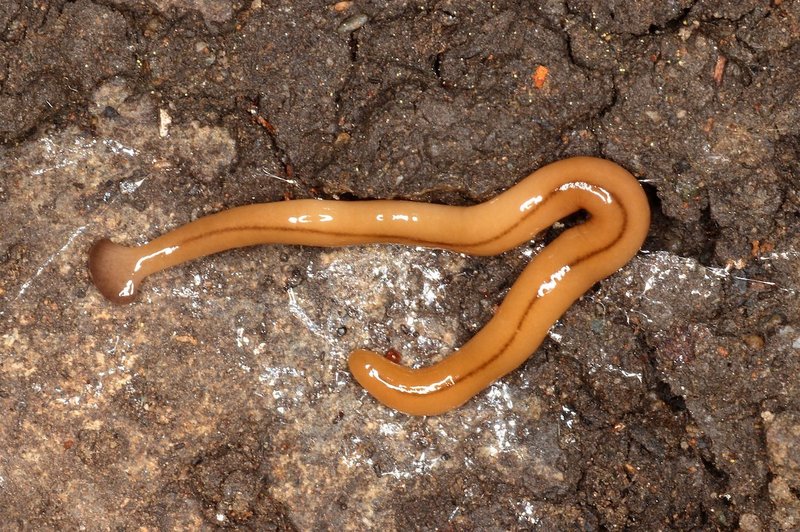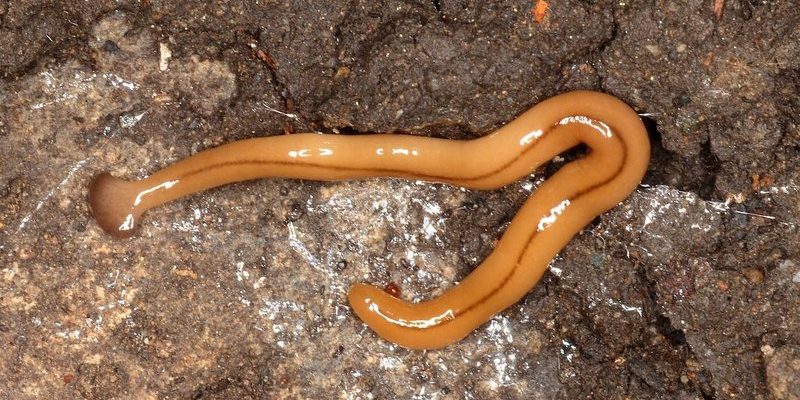
Imagine these worms as the garden’s uninvited guests, sneaking in when you least expect it. They might look deceptively harmless, but they’re swift predators that feast on essential garden creatures like earthworms. If you’re wondering whether your garden has fallen victim to a hammerhead worm infestation, keep reading. Here’s what you need to know.
What Are Hammerhead Worms?
Hammerhead worms, scientifically known as **Bipalium** species, are flatworms that can reach impressive lengths, up to 12 inches or more. They’re not just any flatworms; they have a distinctive hammer-shaped head that makes them easy to identify. They come in various colors, often sporting shades of brown, gray, or even vibrant blues.
These worms are native to tropical regions, but they’ve been spreading to temperate areas, often hitching rides on imported plants or soil. Now, you might be wondering if they’re dangerous. While they don’t pose a direct threat to humans, they can wreak havoc on your garden ecosystem by preying on beneficial organisms.
How to Identify Hammerhead Worms
Spotting a hammerhead worm can be surprisingly simple if you know what to look for. First and foremost, their **distinctive head shape** is a big clue. Instead of the typical elongated body of most worms, the hammerhead has a flat head that resembles, well, a hammer!
When they move, hammerhead worms exhibit a unique gliding or slithering motion, which can be oddly mesmerizing. You might find them during damp weather, as they prefer to roam outside in moist conditions. Keep an eye out for their eerie movements, especially in the early morning or late evening.
Most importantly, look for their **habitat choices**. They gravitate toward damp, shaded areas, often lurking under leaf litter or rocks. If you’re noticing odd trails in your soil or around your plants, it’s worth investigating further.
Signs of Infestation
So, how do you know if your garden is hosting a hammerhead worm infestation? Here are some signs to watch out for:
- Visible Worms: The most obvious sign is seeing these worms in your garden. If you spot one, check for more.
- Decreased Earthworm Population: Since hammerhead worms feed on earthworms, a noticeable drop in their numbers might indicate their presence.
- Irregular Trails: Look for shiny, mucus-like trails left behind as they move through your garden beds.
- Plant Health Issues: If your plants start wilting or showing signs of stress without a clear reason, it could be due to the hammerheads disrupting the soil’s ecosystem.
If these signs resonate with what you’re seeing, it’s time to take action to protect your garden.
Impact on Your Garden
Hammerhead worms can be sneaky, effectively reducing the health of your garden over time. Since they dine on earthworms, which are crucial for soil health, their presence can lead to poorer soil structure and reduced nutrient availability for plants.
Moreover, if you have other beneficial organisms in your garden, hammerhead worms may prey on them too. You may notice that your soil is less aerated and that your plants don’t seem to thrive as they should. This is a serious issue, especially if you’re growing vegetables or other plants that rely on healthy soil.
You might think, “Can’t I just ignore them?” but this approach can lead to bigger issues down the road. The longer these worms stay, the more damage they can inflict on the delicate balance of your garden’s ecosystem.
How to Control Hammerhead Worms
When it comes to dealing with hammerhead worms, you have several options to control their population:
- Manual Removal: If you spot these worms, you can remove them by hand. Use gloves and place them in a sealed bag for disposal.
- Environmental Adjustments: Reducing humidity and dampness in your garden can help deter these creatures. Make sure your garden beds have proper drainage.
- Natural Predators: Introduce predator species, like certain birds, that might help keep the hammerhead worm population in check.
However, be cautious with chemical treatments. Many gardens thrive on a balanced ecosystem, and harsh chemicals can further disrupt it. It’s better to start with more organic methods before considering any pesticides.
Preventing Future Infestations
Once you’ve tackled the current infestation, the goal is to prevent these pesky worms from returning. Here are some proactive steps to consider:
- Soil Health: Maintain healthy, well-aerated soil. This can support a thriving population of earthworms, making it harder for hammerheads to establish themselves.
- Regular Monitoring: Make it a habit to inspect your garden regularly. Early detection can save you a lot of trouble.
- Cautious Planting: When adding new plants or soil, ensure they’re free from pests. Consider treating them before introducing them to your garden.
Creating a robust and resilient garden environment not only helps keep hammerhead worms at bay but also enhances your plants’ overall health.
Noticing the signs of a hammerhead worm infestation isn’t pleasant, but it’s crucial for your garden’s health. These little invaders can do significant damage, so spotting them early is key. By learning how to identify them and employing some straightforward control methods, you can protect your plants and ensure your garden thrives.
Remember, a healthy garden isn’t just about the plants themselves—it’s about the entire ecosystem working together. By keeping an eye out for hammerhead worms and taking proactive steps, you can enjoy your garden to its fullest, surrounded by healthy soil and lively earthworms, rather than creepy, hammerheaded intruders!

